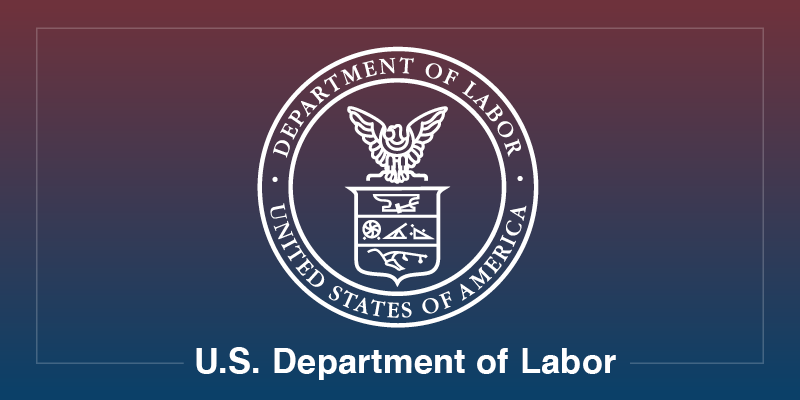the US govt is against child slave labour, but in favor of regular child labour (practiced in america over 100 years ago) and in favor of adult slave labour as evidenced by its prison economy.
You are using an out of date browser. It may not display this or other websites correctly.
You should upgrade or use an alternative browser.
You should upgrade or use an alternative browser.
I drink your milkshake! a metaphor for capitalism
- Thread starter rickyb
- Start date
the US govt is against child slave labour, but in favor of regular child labour (practiced in america over 100 years ago)
Child Labour | The Canadian Encyclopedia
"Child labour is defined as the regular employment of boys and girls under the age of 15 or 16. Attitudes toward child labour have altered dramatically since the late 18th century, when it was generally assumed that children should contribute to the family economy from about age seven."
"Prior to the 19th century, children were often seen as economic assets to families. In most cases, this meant assisting parents, but it could also entail paid employment outside the home. Such activity might include the acquisition of skills useful in adulthood, possibly such as a formal apprenticeship. Child labour made an important contribution to Aboriginal culture and to the societies of New France and early English Canada. However, during the 19th and early 20th centuries most Canadian children became economic liabilities to their families. Boys' and girls' time was increasingly taken up securing a formal education. By 1911 about 40 per cent of Canadian children aged five to nine, and 50 per cent of 10-to19-year-olds were in school. As the percentage of children attending school increased, the proportion of boys aged 14-19 who were gainfully employed dropped from 68 per cent in 1921 to 40 per cent in 1961.
Industrialization and urbanization in the mid-19th century opened up more opportunities of paid employment for children who were not in school. The proportion of urban residents grew from about 17 per cent at Confederation in 1867 to over one-third by 1901, and to almost one-half by 1921. In major urban centres, children could find employment in Montréal textile mills, Hamilton businesses, mines in Cape Breton and British Columbia, and small manufacturing enterprises in the Maritimes. Still, many jobs for children were considered "dead end" — poorly paid, menial positions without any opportunity for advancement. Some positions, such as those of messenger boy and newspaper vendor, did not lead to adult employment. Moreover, most children holding jobs came from working-class backgrounds."
Social reformers of this era were concerned with child labour and were intent on improving Canadian society. As well as supporting compulsory schooling and measures to combat juvenile delinquency, reformers sought to ban child labour. The first wave of provincial legislation regulating child labour in factories and mines began to pass in the 1870s and 1880s. But the prohibition of child labour did not come until the 20th century.
"Several conditions combined to restrict and eventually end child labour in Canada. By the beginning of the 20th century most provinces had enacted labour laws to restrict the employment of children. Legislation restricting child employment in mines was enacted in Nova Scotia in 1873, and British Columbia in 1877. By 1929 children under 14 had been legally excluded from factory and mine employment in most provinces."
we thought we knew everything over 100 years ago and now looking back we can see we were wrong. can you imagine what were doing wrong at presentChild Labour | The Canadian Encyclopedia
"Child labour is defined as the regular employment of boys and girls under the age of 15 or 16. Attitudes toward child labour have altered dramatically since the late 18th century, when it was generally assumed that children should contribute to the family economy from about age seven."
"Prior to the 19th century, children were often seen as economic assets to families. In most cases, this meant assisting parents, but it could also entail paid employment outside the home. Such activity might include the acquisition of skills useful in adulthood, possibly such as a formal apprenticeship. Child labour made an important contribution to Aboriginal culture and to the societies of New France and early English Canada. However, during the 19th and early 20th centuries most Canadian children became economic liabilities to their families. Boys' and girls' time was increasingly taken up securing a formal education. By 1911 about 40 per cent of Canadian children aged five to nine, and 50 per cent of 10-to19-year-olds were in school. As the percentage of children attending school increased, the proportion of boys aged 14-19 who were gainfully employed dropped from 68 per cent in 1921 to 40 per cent in 1961.
Industrialization and urbanization in the mid-19th century opened up more opportunities of paid employment for children who were not in school. The proportion of urban residents grew from about 17 per cent at Confederation in 1867 to over one-third by 1901, and to almost one-half by 1921. In major urban centres, children could find employment in Montréal textile mills, Hamilton businesses, mines in Cape Breton and British Columbia, and small manufacturing enterprises in the Maritimes. Still, many jobs for children were considered "dead end" — poorly paid, menial positions without any opportunity for advancement. Some positions, such as those of messenger boy and newspaper vendor, did not lead to adult employment. Moreover, most children holding jobs came from working-class backgrounds."
Social reformers of this era were concerned with child labour and were intent on improving Canadian society. As well as supporting compulsory schooling and measures to combat juvenile delinquency, reformers sought to ban child labour. The first wave of provincial legislation regulating child labour in factories and mines began to pass in the 1870s and 1880s. But the prohibition of child labour did not come until the 20th century.
"Several conditions combined to restrict and eventually end child labour in Canada. By the beginning of the 20th century most provinces had enacted labour laws to restrict the employment of children. Legislation restricting child employment in mines was enacted in Nova Scotia in 1873, and British Columbia in 1877. By 1929 children under 14 had been legally excluded from factory and mine employment in most provinces."

we thought we knew everything over 100 years ago and now looking back we can see we were wrong. can you imagine what were doing wrong at present
Indeed. Canada is a member of the British Commonwealth of Nations to this day. Both its past and present are quite similar to that of the United States.
we both did genocideIndeed. Canada is a member of the British Commonwealth of Nations to this day. Both its past and present are quite similar to that of the United States.
DriveInDriѵeOut
Inordinately Right
Hindsight will undoubtedly show we should have just shot commies in the head.we thought we knew everything over 100 years ago and now looking back we can see we were wrong. can you imagine what were doing wrong at present

Fed Guarantees Unproductive Debt and Perilous Speculation - Ralph Nader
By Ralph Nader July 24, 2020 The Federal Reserve Board – our unaccountable Central Bank – needs more citizen and Congressional supervision. Fees from financial institutions fund its operations, not Congressional appropriations. It is as secret as it wants to be and that's plenty. (See Secrets of...
Hindsight will undoubtedly show we should have just shot commies in the head.
capitalism is so efficient that hte US radio host admitted to hiding in the soda room when he used to be a server.
Communism is so efficient that it can’t exist in a free society.
george lucas not a huge believer in capitalism and democracy working together.Communism is so efficient that it can’t exist in a free society.
george lucas not a huge believer in capitalism and democracy working together.
George Lucas is an idiot who ruined the Star Wars remasters with stupid edits.
doesnt make him an idiot.George Lucas is an idiot who ruined the Star Wars remasters with stupid edits.
doesnt make him an idiot.
Indeed. Believing capitalism and democracy don’t work together is what makes him an idiot. If what you say is true. Haven’t looked into it.
believe it. who do you think is corrupting the politicians LOLIndeed. Believing capitalism and democracy don’t work together is what makes him an idiot. If what you say is true. Haven’t looked into it.
believe it. who do you think is corrupting the politicians LOL
Capitalism is the best system we’ve got on Earth right now, buddeh! Has lifted far more people out of poverty than communism.
give me a break were living in a bubble. as capitalist created global warming increases, more people will be in poverty than ever before. people will realize capitalism hasnt worked.Capitalism is the best system we’ve got on Earth right now, buddeh! Has lifted far more people out of poverty than communism.
so you dont believe in global warming?Capitalism is the best system we’ve got on Earth right now, buddeh! Has lifted far more people out of poverty than communism.
Similar threads
- Locked
- Replies
- 152
- Views
- 24K
- Replies
- 1
- Views
- 6K

